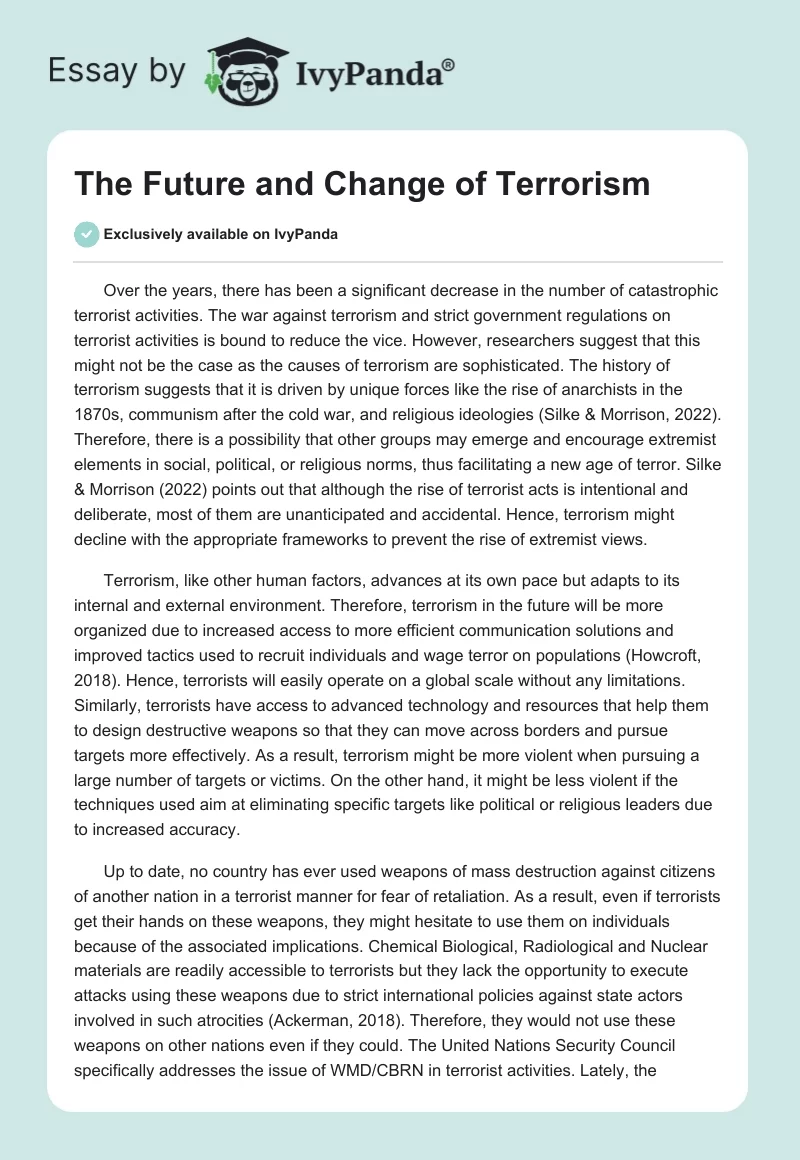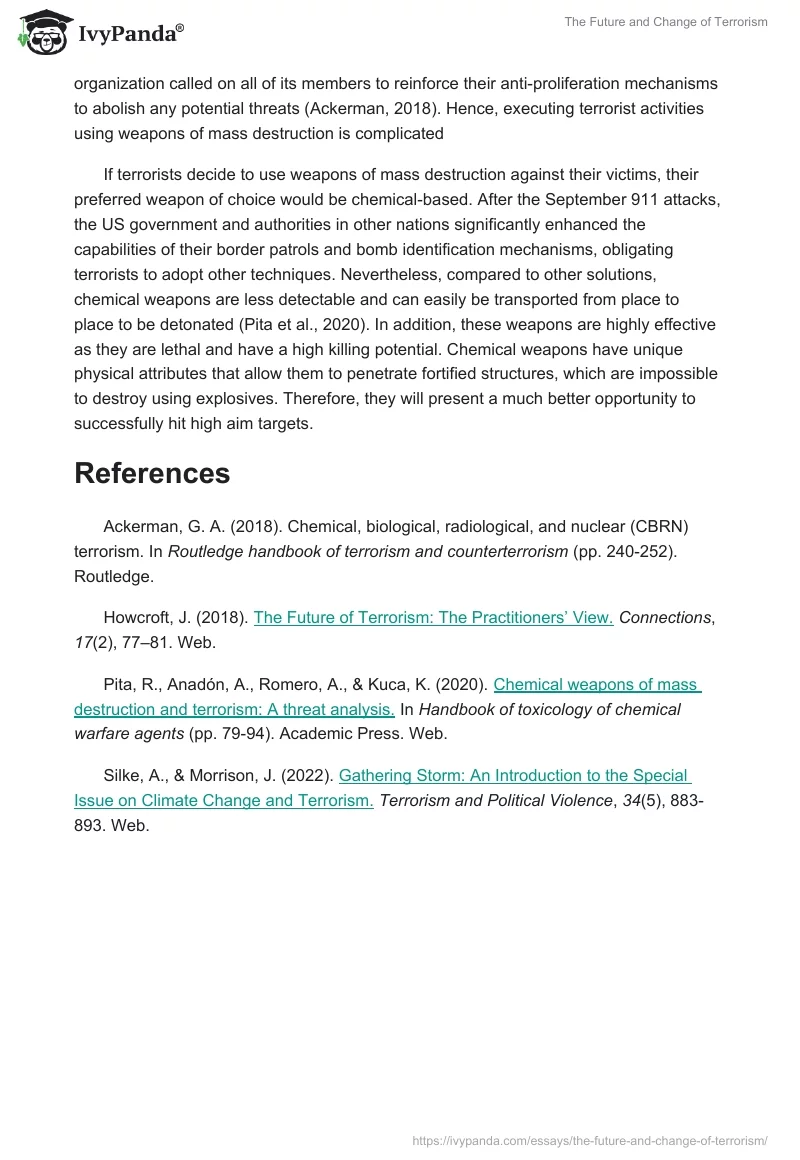Over the years, there has been a significant decrease in the number of catastrophic terrorist activities. The war against terrorism and strict government regulations on terrorist activities is bound to reduce the vice. However, researchers suggest that this might not be the case as the causes of terrorism are sophisticated. The history of terrorism suggests that it is driven by unique forces like the rise of anarchists in the 1870s, communism after the cold war, and religious ideologies (Silke & Morrison, 2022). Therefore, there is a possibility that other groups may emerge and encourage extremist elements in social, political, or religious norms, thus facilitating a new age of terror. Silke & Morrison (2022) points out that although the rise of terrorist acts is intentional and deliberate, most of them are unanticipated and accidental. Hence, terrorism might decline with the appropriate frameworks to prevent the rise of extremist views.
Terrorism, like other human factors, advances at its own pace but adapts to its internal and external environment. Therefore, terrorism in the future will be more organized due to increased access to more efficient communication solutions and improved tactics used to recruit individuals and wage terror on populations (Howcroft, 2018). Hence, terrorists will easily operate on a global scale without any limitations. Similarly, terrorists have access to advanced technology and resources that help them to design destructive weapons so that they can move across borders and pursue targets more effectively. As a result, terrorism might be more violent when pursuing a large number of targets or victims. On the other hand, it might be less violent if the techniques used aim at eliminating specific targets like political or religious leaders due to increased accuracy.
Up to date, no country has ever used weapons of mass destruction against citizens of another nation in a terrorist manner for fear of retaliation. As a result, even if terrorists get their hands on these weapons, they might hesitate to use them on individuals because of the associated implications. Chemical Biological, Radiological and Nuclear materials are readily accessible to terrorists but they lack the opportunity to execute attacks using these weapons due to strict international policies against state actors involved in such atrocities (Ackerman, 2018). Therefore, they would not use these weapons on other nations even if they could. The United Nations Security Council specifically addresses the issue of WMD/CBRN in terrorist activities. Lately, the organization called on all of its members to reinforce their anti-proliferation mechanisms to abolish any potential threats (Ackerman, 2018). Hence, executing terrorist activities using weapons of mass destruction is complicated
If terrorists decide to use weapons of mass destruction against their victims, their preferred weapon of choice would be chemical-based. After the September 911 attacks, the US government and authorities in other nations significantly enhanced the capabilities of their border patrols and bomb identification mechanisms, obligating terrorists to adopt other techniques. Nevertheless, compared to other solutions, chemical weapons are less detectable and can easily be transported from place to place to be detonated (Pita et al., 2020). In addition, these weapons are highly effective as they are lethal and have a high killing potential. Chemical weapons have unique physical attributes that allow them to penetrate fortified structures, which are impossible to destroy using explosives. Therefore, they will present a much better opportunity to successfully hit high aim targets.
References
Ackerman, G. A. (2018). Chemical, biological, radiological, and nuclear (CBRN) terrorism. In Routledge handbook of terrorism and counterterrorism (pp. 240-252). Routledge.
Howcroft, J. (2018). The Future of Terrorism: The Practitioners’ View.Connections, 17(2), 77–81. Web.
Pita, R., Anadón, A., Romero, A., & Kuca, K. (2020). Chemical weapons of mass destruction and terrorism: A threat analysis. In Handbook of toxicology of chemical warfare agents (pp. 79-94). Academic Press. Web.
Silke, A., & Morrison, J. (2022). Gathering Storm: An Introduction to the Special Issue on Climate Change and Terrorism.Terrorism and Political Violence, 34(5), 883-893. Web.


